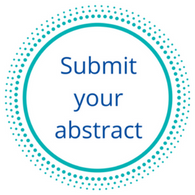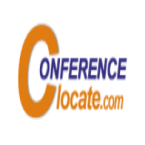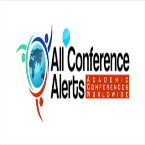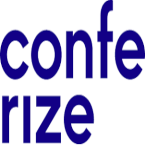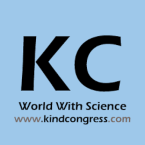Recommended Global Neuroscience Webinars & Conferences
Europe & UK
Asia Pacific & Middle East
Canada
BRAIN INJURY 2023
About us
We are happy to announce "Brain Injury 2023" scheduled during March 20-21, 2023 at Berlin, Germany with a theme of “ Explore the Latest Innovative Treatment and Prevention of Brain Injury”. We invite you all to Brain Injury 2023 to have incredible associations with the professionals.
On this auspicious occasion, Organizing Committee invites the participants from all over the globe to take part in this annual flagship conference with the theme “Explore the Latest Innovative Treatment and Prevention of Brain Injury”. Brain Injury 2023 aims in proclaim knowledge and share new ideas amongst the professionals, industrialists and students from research areas of Peadiatric neurologists and Epileptologists, Neurosurgeons and neuro-radiologists, to share their research experiences and indulge in interactive discussions and technical sessions at the event. The Conference will also have a space for companies and/or institutions to present their services, products, innovations and research results.
Importance & Scope:
The main scope and importance of the conference is to bring all Professionals to one roof and share their experience in discussing the innovative trends in the field of Brain Injury This conference has taken the initiative to gather the world-class specialists both from academia and industry in a single platform. This conference will also helpful for the Young Researchers who are looking to grow in the field of Neuro Surgeons
Why to attend?
Brain Injury 2023 is one of the world's leading scientific conferences to bring together internationally renowned distinguished academics in the field of Neurology, Neuroscience, Neuropediatrics, Neurosurgeons, Neurophysiologists, Neuroscience Brain researchers, Scientists, Academic scientists, Public Health professionals, Industry researchers, Scholars to exchange about state of the art Research and Technologies and to bring discoveries of Neurology disorders to Patients. Attending International conference is being the Professional Development and to get the current state of research and the challenges to future discovery.
Target Audience:
Our prospective audience includes Neurologists, Neurosurgeons, psychiatrists, physiatrists, Pharmacists, Research scientists, Neurology Organizations and societies, Pharmaceutical companies, Neuro and CNS drug Industries, Neuroscience associations & foundations, Professors and Students from Academia in the study of Neurology
We truly believe that our Brain Disorders conference in Denmark will be a highly rewarding international event for everyone and will bring enhancement and neuro industrial development, which will contribute to improving quality of life.
Sessions & Tracks
Track 1: Brain and Neurological Disorders
This session was specially designed to better understand brain and neurological disorders from their root causes to treatment using various scientific models and advanced technologies
Brain Disorders, including developmental, psychiatric and neurodegenerative diseases are chronic and incurable conditions whose disabling effects may continue for years. Brain Disorders emerge as leading contributors to global disease burden, in terms of human suffering and economic cost.
Tens of millions of Americans suffer from a variety of mental and neurological health conditions each year. This includes neurodegenerative diseases such as Alzheimer’s and Parkinson’s, psychiatric disorders such as anxieties, bipolar disorder, depression and schizophrenia, as well as diseases such as autism. In Europe it has been estimated that 35% of all disease burden is attributable to brain disorders.
Track 2: Cognitive Neuroscience
Cognitive Neuroscience is a sector of neuroscience which explains the studies of neuroscience and the biological courses that includes human cognition, especially in which it is related amongst brain structures, its activity and cognitive purposes. The main purpose of it is to control how the brain functions and to know how classically it achieves performance. Cognitive Neuroscience may be a division of both psychology and neuroscience since it includes with together the biological sciences with the behavioural sciences, such as psychiatry and psychology. Many technologies are charity to measure brain activity, like useful neuroimaging, which can provide insight into behavioural observations when behavioural data is inadequate. Decision-making is an example for a biological procedure that involves cognition
Track 3: Neuroscience and Neuroimaging
Neuroscience is that the scientific study of the nervous system. It is an interdisciplinary science that combines and draws on multiple fields, from molecules to medicine. Neuroscience is that the study of how the nervous system develops, its structure, and what it does. Neuroscientists specialise in the brain and its impact on behavior and cognitive functions. Not only is neuroscience concerned with the normal functioning of the nervous system, but also what happens to the nervous system when people have neurological, psychiatric and neurodevelopmental disorders. Neuroscience is usually mentioned within the plural, as neurosciences.
Neuroimaging is the discipline that deals with the in vivo depiction of anatomy and function of the central nervous system (CNS) in health and disease. Neuroimaging encompasses the varied techniques wont to image the structure of the brain, and it is relevant to some health science disciplines, where it's an excellent impact on the understanding, diagnosis, and treatment of neurological diseases.
Track 4: Stroke and Cerebral Haemorrhage
A Haemorrhagic Stroke that happens inside your brain is also called an intracerebral haemorrhage. Symptoms of an ICH can differ from person to person, but they’re almost always present immediately after the stroke occurs.
There are two likely causes of a ruptured blood vessel in the brain. The most mutual cause is an aneurysm. An aneurysm happens when a section of a blood vessel becomes enlarged from chronic and dangerously high blood pressure or when a blood vessel wall is feeble, which is usually congenital. This ballooning hints to thinning of the vessel wall, and ultimately to a rupture.
- Ischemic stroke
- Haemorrhage stroke
- Stroke prognosis
- Phobias
- Cerebral hypoperfusion
- Intracranial haemorrhage
- Non-invasive brain stimulation
Track 5: Neuro Cardiology
Neuro Cardiology is the study of Interaction between heart and brain. It generally deals with the effect of stress on the heart. The cardiovascular system is under the regulation of the nervous system. An appropriate balance in the hormone levels, kind of life style, environmental conditions play a very important role in maintaining a good relation between heart and brain.
- Stress
- Cardiovascular diseases
- Brain Injury
- Interactions between heart and brain
- Heart failure
Track 6: Central Nervous System Disorders
The Central Nervous System (CNS) is the part of the nervous system containing of the brain and spinal cord. The central nervous system is so named as it integrates information it takes from, and organizes and influences the activity of, all parts of the bodies of bilaterally symmetric animals
The CNS is contained within the dorsal body cavity, with the brain housed in the cranial cavity and the spinal cord in the spinal canal. In vertebrates, the brain is protected by the skull, whereas the spinal cord is protected by the vertebrae.
- Addiction
- Cerebral Edema
- Functional and structural disorders
- CNS Neoplasia
- Spinal Meningitis
- CNS demyelinating disorders
- Development of Therapeutics for CNS Disorders
Track 7: Neuro Genetics
Neuro Genetics and neurometabolic abnormalities are disorders that move how the brain functions. They occur in young children of all ages, races and genders. Neurogenetic Disease is the umbrella period of chronic diseases which describe the brain abnormalities that happen following changes in the genes of the child and these cause certain brain cells to grow and function abnormally. In the case of neurometabolic abnormalities; these disorders result from problems in the enzymes of the form’s cells which are either unable to either use foods to produce the vitality the cell needs, or get rid of the breakdown products of the foods used
Track 8: Neuropediatrics and Neurorehabilitation
Pediatric Neurology or child neurology mentions to a particular branch of medicine that contracts with the diagnosis and management of neurological circumstances in neonates (newborns), infants, children and adolescents. Neurological developmental problems during childhood. Childhood epilepsy.
Neurorehabilitation is a complex medical procedure which aims to aid retrieval from nervous system injury and to diminish and compensate for any functional alteration. The most imperative therapies are those that help people live their everyday lives. These contain physiotherapy, occupational therapy, psychological therapy, speech, vision therapy, and language therapy, and therapies focused on daily function and community re-integration. A particular effort is given to improving mobility and asset, as this is key to a person's individuality. Development in neuroimaging techniques has greatly improved the scope and outcome of neurorehabilitation.
- Neuropsychiatry
- Neuropsychology
- Cognitive Neurology
- Rehabilitation Robotics
Track 9: Neurosurgery and Neural Circuits
Neurosurgery may be an extremely specific medical field targeted on process of disorders of the brain and spine. A surgeon may be a MD World Health Organization makes a specialty of the designation and operation of disorders of the central and peripheral spinal cord organized with innate anomalies, vascular disorders trauma, tumors, infections of the brain or spine, stroke, or chronic diseases of the spine. Neurosurgeons these days will operate employing a magnifier to envision the tiniest of brain and spine structures. A neural structure surgeon will accomplish small surgical operation to correct vascular disorders like aneurysms.
- Types of Neurosurgery
- Neurosurgery Procedures
- Neurosurgery Treatment
A neural circuit is a population of neurons interrelated by synapses to carry out a specific function when triggered. Neural circuits interconnect to one another to form large scale brain networks. Biological neural networks have enthused the design of artificial neural networks, but artificial neural networks are usually not firm copies of their biological counter parts.
Track 10: Clinical Trials and Case Reports
Clinical Trials are experiments or observations exhausted clinical research. Such prospective biomedical or behavioral research studies on human participants are designed to answer specific questions on biomedical or behavioral interventions, including new treatments and known interventions that warrant further study and comparison. In medicine, a case report could also be an in depth report of the symptoms, signs, diagnosis, treatment, and follow-up of a personal patient. Case reports may contain a demographic profile of the patient, but usually describe an unusual or novel occurrence. Some case reports also contain a literature review of other reported cases. Case Reports are professional narratives that provide feedback on clinical practice guidelines and offer a framework for early signals of effectiveness, adverse events, and cost. they will be shared for medical, scientific, or educational purposes.
Track 11: Neuropharmacology
Neuropharmacology is survey of in what way drugs interact with cellular function within the nervous system, and also the neural mechanisms by which they impact behavior. The studies are much concern with the interactions of neurotransmitters, neuro-hormones, neuromodulators, neuropeptides, enzymes, ion channels second messengers, receptor proteins and co-transporters within the peripheral and central nervous systems. Innovative studies are created to execute developments in drugs to treat wide various neurological disorders together with neurodegenerative diseases notable to be Parkinson's disease, pain, psychological disorders, Alzheimer’s disease, addiction and plenty of others.
Recent amelioration in neuropharmacology were designing drugs on bases of Structural modifications for neurological drugs and General antidepressant drugs changes in brain differently in depressed and non-depressed person.
Track 12: Neurobiology and Pathophysiology of Disorders
Neurobiology is the study of cells of the nervous system and the organization of these cells into functional circuits that process information and mediate behaviour. It brings together many disciplines including biochemistry, molecular biology, anatomy, physiology, and medicine, to study the development and function of the brain.
Track 13: NeuroImmunology and Neuroinflammation
The rapid development of neuroscience and limmunoogy has revealed the nervous system and the immune system to be closely connected. It has become clear that many of these diseases are associated with a dysregulation of the immune system. The progression of neuroimmunology has opened up possibilities in multidisciplinary research and developing new and innovative treatments for some of the most debilitating neurological diseases.
Neuroinflammation is a key player in brain function and dysfunction. It is therefore necessary to identify the cellular and molecular mechanisms of neuroinflammation to understand how it participates to brain diseases.
Track 14: Dementia
Dementia is a chronic and higher intellectual function due to organic brain disease. Dementia is condition in which a person loses their ability to think, remember, learn, and to make decisions, and solve the problems. It may also include like personality changes and emotional problems. Some other problems like decrease in motivation emotional problems and problems with language.
Globally, dementia affected total of 46 million people in 2015. About 10% of people develop this disorder at any some point of their lives. By ages 3% of the people between the ages 65–74 have dementia, and 19% of people between the age 75 and 84 and nearly half of those over 85 years of age. In 2013 dementia was resulted in about 1.7 million deaths in 1990. As more number of people are living longer, dementia is becoming very common in population as a whole. It is to be believed to result in economic costs of 604 billion USD per year.
Track 15: Peripheral Neuropathy
Peripheral Neuropathy is damage or disease that affects the nerves, which may be impair sensation, movement, gland or organ function, and other aspects of health, depending on type of nerve affected. Some common causes include systemic affect which causes diseases such as diabetes, vitamin deficiency, and medication. Peripheral Neuropathy may be chronic or acute. Acute neuropathies demand for urgent diagnosis. Motor nerves, sensory nerves, or autonomic nerves may be affected. Peripheral Neuropathies may be classified according to the type of nerve involved, or by the underlying cause.
Geriatric and obese population people are at high risk for the developing peripheral neuropathy. Centers for Disease Control and Prevention stated, that the people who are diagnosed with diabetes mostly are obese. so, with the rising in geriatric population and growing prevalence of diabetes propels the demand of global market to peripheral neuropathy treatment. According to World Health Organization, the global geriatric population increase from 524 million in 2010 to about 2 billion by the year 2050. World Health Organization stated in the year 2012 that, more than the 40 million children under the age of 5 were overweight. And it has also estimated that 10% of the world population of adult was obese in 2012.
Track 16: Brain Stroke
Stroke is when there is a poor blood flow to the brain that results in cell death. There are two types of stroke 1) ischemic stroke which is defined as lack of blood flow to the brain, 2) haemorrhagic stroke which occurs due to bleeding. These result in part of the brain not functioning properly. Symptoms like inability to move or feel on one side of the body, feeling like the world is spinning, or loss of vision. If the symptoms last in less than one or two hours then it is known as a transient ischemic attack also known as mini-stroke. A haemorrhagic stroke associated with a severe headache. The symptoms of a stroke can be permanent.
In 2013 about 6.9 million people had an ischemic stroke and about 3.4 million people had a haemorrhagic stroke. In 2015 about 42.4 million people who had previously had a stroke and they were still alive. In between 1990 and 2010 the number of strokes which occurred each year was decreased by 10% in the developed world and increased by approximately 10% in the developing world. After coronary artery disease, death cause by the stroke was in second place in 2015. About half of the people who have had a stroke live less than the one year.
Track 17: Psychiatric Disorder
It is a mental disorder, or mental illness. The causes of mental disorders are unknown. Mental disorders are explained by the combination of behaviour of the person , or feels, or thinks. This are associated with the particular regions or functions of the brain.
Globally Some common mental disorders include depression, that affects about 400 million, dementia which affects about 35 million, schizophrenia, that affects about 21 million people . WHO stated that 350 million populations is suffering with depression and mental disorders and approximately 24 million populations globally is affected by schizophrenia disorder. According to the survey conducted by CPA in the year 2012, about 77% of patient population receive psychotherapy are benefited or remained generalized anxiety disorder free after the treatment.
Track 18: Brain Mapping
Brain Mapping is a technique or method which is used for the study of the structure and functions of different parts of the brain. Brain mapping is used for recording of brain wave activities. Brain mapping helps for surgeons in identifying brain areas which is responsible for critical functions of the body like locomotion, vision, sensation, and speech. Brain mapping helps in detection of various abnormalities such as tumours, seizures (partial, incomplete, complete) toxic injuries, Alzheimer disorders, infections. Brain mapping also helps in identifying the external environment, physical injuries. It is done by stimulation of certain brain areas that which perform language, motor, sensory, and visual functions. Brain-mapping instruments are computed tomography, positron emission tomography, electroencephalography, near-infrared spectroscopy, magneto encephalography, and functional magnetic resonance imaging. These techniques help in measuring cerebral blood flow, metabolism, and structural integrity of the brain. It is performed in two ways two-stage procedures and directly during surgery. Brain mapping, performed during surgery, is known as intraoperative brain mapping. The brain mapping procedure time depends upon targeted brain tissues for surgery and locations of surgery
Track 19: Alzheimer‘s Disease and Dementia
The brain immediately confronts us with its great complexity. Alzheimer's which is a type of Dementia is: An Underlying Disease that causes problems with memory, behaviour and thinking. As estimated,5.3 million Americans of all ages have Alzheimer's disease in the recent survey. AD is the sixth leading cause of death in the United States and the fifth leading cause of death in Americans of age 65 and older. The etiological factors, other than older age includes genetic susceptibility. so it is important to exchange views on Causes and Prevention of Alzheimer’s, Alzheimer’s Disease Diagnosis and Symptoms, Alzheimer’s Disease Pathophysiology and Disease Mechanisms, Care Practice and Awareness. we are also going to analyse the Alzheimer’s Disease Imaging , Mechanisms for Treatment and Therapeutic Targets.
Track 20: Neuroimaging and Brain Engineering
What seems astonishing is that engineering techniques like brain engineering, or Neural tissue engineering can be used to understand, repair, replace, enhance, or otherwise exploit the properties of neural systems and Neuro computing is the study of brain function in terms of the information processing properties of the structures that make up the nervous system. current researches in the field of neuroengineering include: Neural imaging and neural networking, Biomolecular therapies in neural regeneration, Neurorobotics, Biological neural networking, Neurohydrodynamics and clinical treatment, Engineering strategies for repair, Computational clinical neuroscience, biological-neuronmodelling, Behaviors of networks and advanced therapies. People will also be enlightened on Advancement in brain computer interface and deep brain stimulation.
Track 21: Autonomic and Central Nervous System
Autonomic disorders may result from other disorders that damage autonomic nerves or they may occur on their own. Progressive autonomic failure usually becomes apparent in the sixth decade of life. The Working of the central nervous system has proved to be more and more extensive and more and more fundamental as experiment has advanced in examining it. CNS disorder can be either myelopathy or encephalopathy.
Specified disorders to be discussed under this category are: Bipolar disorder, Migraine and Neuropathic pain syndromes, Accessory nerve disorder, Autonomic dysreflexia and neuropathy, CNS disorder and structural defects, Facial nerve paralysis and Meningitis.
Market Analysis
Brain Injury Market is expected to reach $ 148 Billion by 2029 from $11.81 Billion in 2021 at a CAGR of 11 %. Brain Injury is a field of medicine that deals with the medical treatment of Neurological disorders, Cognitive neuroscience, Neurobiology of CNS and Clinical Neuro-surgery. Region/country wise Neurology market report is available at Brain Injury 2023.
Brain Injury-2023 welcomes attendees, presenters, and exhibitors from all over the world to Berlin, Germany. We are delighted to invite you all to attend and register for the“11th International Conference on Brain Injury & Neuro Surgeons” which is going to be held during March 20-21, 2023 in Berlin, Germany.
The organizing committee is gearing up for an exciting and informative conference program including plenary lectures, symposia, workshops on a variety of topics, poster presentations and various programs for participants from all over the world. We invite you to join us at the Brain Injury-2023, where you will be sure to have a meaningful experience with scholars from around the world. All members of the Brain Injury-2023 organizing committee look forward to meeting you in Berlin, Germany.
Importance and Scope:
The importance of this research cannot be inflated. More than 1,000 disorders of the brain and nervous system result in more hospitalizations and lost productivity than any other disease group, including heart disease and cancer.
In 2007, the World Health Organization estimated that neurological disorders affect up to one billion people worldwide. In fact, neurological diseases make up 11 percent of the world’s disease burden, not including mental health and addiction disorders.
The cost of these diseases is high across the globe. For example, the European Brain Council estimated in 2010 that neurological diseases in Europe alone cost one trillion dollars a year.
Data from 2005 indicate that neurological illnesses affect more than 50 million Americans annually and cost more than $500 billion to treat. In addition, mental disorders strike 44 million American adults a year at a cost of $148 billion.
Advances in research could reduce these costs. Discovering how to delay the onset of Alzheimer's disease by five years could save $50 billion in annual health care costs in the United States alone. Given the aging of many populations around the globe, the societal impact of Alzheimer’s is many times greater than financial resources it will take to cure.
All these estimates are low due to the lack of statistics and treatment in developing countries. As developing nations gain access to health care, the number of patients requiring treatment will increase, furthering the need for research to understand and treat diseases effectively.
The scope of neuroscience has broadened to include different approaches used to study the molecular, cellular, developmental, structural, functional, evolutionary, computational, and medical aspects of the nervous system. The techniques used by neuroscientists have also expanded enormously, from molecular and cellular studies of individual nerve cells to imaging of sensory and motor tasks in the brain. Recent theoretical advances in neuroscience have also been aided by the study of neural networks.
Global Neuroscience Conference is a unique forum to bring together worldwide distinguished academics in the field of neuroscience and neurology, Brain researchers, public health professionals, scientists, academic scientists, industry researchers, scholars to exchange about state of the art research and technologies.
Aim of this conference is stimulate new ideas for treatment that will be beneficial across the spectrum of Neuroscience.
Conferences, National symposiums and Workshops provide a dedicated forum for the advancement, execution and exchange of information about Neuroscience and its allied areas.
- Neurological disorders
- Cognitive neuroscience
- Neurobiology of CNS
- Clinical Neuro-surgery
- Neuro-oncology
- Neuro-degenerative disorders
- Neuro-physiology
- Neuro-genetics
- Neuro-chemistry
- Neuro-informatics
- Neuro-immunology
- Neuro-Ophthalmology
- Neuro-pharmacology
- Neuro-toxicology
- Neuro-psychiatry
- Neuro-rehabilitation
- Neurological Nursing
- Neuro-critical Care
- Novel Therapeutics
Why to attend???
11th International Conference on Brain Injury & Neuro Surgeons is a unique forum to bring together worldwide distinguished academics in the field of neuroscience and neurology, Brain researchers, public health professionals, scientists, academic scientists, industry researchers, scholars to exchange about state of the art research and technologies.
Aim of this conference is stimulate new ideas for treatment that will be beneficial across the spectrum of Neuroscience
A Unique Opportunity for Advertisers and Sponsors at this International event:
For more details please visit- https://braininjury.conferenceseries.com/
- Major Associations around the Globe:
- American Neuropsychiatric Association
- British Neuroscience Association
- British Society for Neuroendocrinology
- Federation of European Neuroscience Societies
- International Behavioral Neuroscience Society
- International Behavioral and Neural Genetics Society
- International Brain Bee
- International Society for Neurochemistry
International Brain Research Organization
- International Society for Autonomic Neuroscience
- Japan Society of Neuro-vegetative Research
- Society for Behavioral Neuroendocrinology
- Society for Neuroscience
- Society for Social Neuroscience
- Nu Rho Psi
- UCL Neuroscience
- Luria Neuroscience Institute
- Netherlands Institute for Neuroscience
- Brain injury association of America
- Neuropathy Association
- The brain & behavior research foundation
- Alzheimer's Association
- Major Associations in Australia working on Neuroscience:
- Applied Neuroscience Society of Australasia
- Australian Association of Neurologists
- Australian Neuroscience Society
- Australian Association of Neurologists
- Neurosurgical Society of Australasia
Target Audience:
Directors, Neurologist, Neurosurgeons, Psychiatrist, Head of department, Professors and Students from Academia in the research of Brain injury.
Target Audience:
- Academia 60%
- Industry 30%
- Others 10%
Top universities 500 globally working in the field of Neuroscience
- Harvard University
- University College London
- Stanford University
- University of California--San Francisco
- Massachusetts Institute of Technology
- University of California--San Diego
- Johns Hopkins University
- University of California--Los Angeles
- Columbia University
- University of Pennsylvania
Universities in Australia which are working in the field of Neuroscience
- The University of Queensland
- University of South Australia
- The University of Western Australia
- The University of Sydney
- Bond University
- Monash University
- University of New England
- UNSW Australia
- Murdoch University
- Swinburne University of Technology
- Macquarine University
- The University of Melbourne
- The University of Adelaide
- Australia National University
- Flinders University
- Charlton Brown University
There are about 46 major research centers in Australia which are working in the field of Neuroscience
- Achucarro Basque Center for Neuroscience
- Academy of Neuroscience for Architecture
- Neuroscience Center, Brigham Young University
- Bronowski Institute of Behavioral Neuroscience
- Center for Molecular Neurobiology Hamburg
- Center for Neural Science
- Centre for Neuroscience and Cell Biology
- Centre for Research in Neurodegenerative Diseases
- Cognitive Neuroscience Society
- Cuban Neuroscience Center
- Cyprus Neuroscience and Technology Institute
- Florey Institute of Neuroscience and Mental Health
- Helen Wills Neuroscience Institute
- Institute for creativity research
- International Institute for Neuroscience of Natal
- Kavli Institute for Systems Neuroscience / Centre for Neural Computation
- Leibniz Institute for Neurobiology
- Luria Neuroscience Institute
- Max Planck Institute of Neurobiology
- National Institute of Mental Health and Neurosciences
- National Institute of Neurological Disorders and Stroke
- Neuroscience Research Australia
- The Neurosciences Institute
- RIKEN Brain Science Institute
- Zilkha Neuro-genetic Institute
All around the globe there are best 1,359 hospitals working on Neuroscience
- Some of them among them are:
- Mayo Clinic
- Massachusetts General Hospital
- Johns Hopkins Hospital
- UCSF Medical Center
- New York-Presbyterian University Hospital of Columbia and Cornell
- Brigham and Women's Hospital
- UCLA Medical Center
- Cleveland Clinic
- NYU Langone Medical Center
- Northwestern Memorial Hospital
Past Conference Report
BRAIN INJURY 2022
Brain Injury 2022 Scientific Committee Members welcomes you to the official website of “9th International Conference on Brain Injury & Neuroscience".
Our International Congress will be holding the gatherings of the experts in the field of Brain injury, Neuroscience, Brain Disorders and Neurology held during June22-23, 2022 at London, UK under the theme of “Unravel the discussion on Brain diseases and disorders".
We are also providing the CME Credits at our esteem Brain Injury conferences.
Our CME accredited World Leading Neuroscience Conference (Brain Injury 2022) is a prestigious event organized with a motivation to provide an excellent international platform for the academicians, researchers, industrial participants and budding students around the world to SHARE their research findings with the global experts.
Dear prospective participants, we are looking forward to represent your contribution and exploring novel research at our 9th International Conference on Brain Injury & Neuroscience being held at Geneva, Switzerland. On behalf of the organizing committee we heart fully welcome & promise a comfortable stay, great scientific content & pleasant memories to take home.
Past Reports Gallery
To Collaborate Scientific Professionals around the World
Conference Date March 20-21, 2023
For Sponsors & Exhibitors
Useful Links
Past Conference Report
Supported By
All accepted abstracts will be published in respective Conference Series International Journals.
Abstracts will be provided with Digital Object Identifier by
